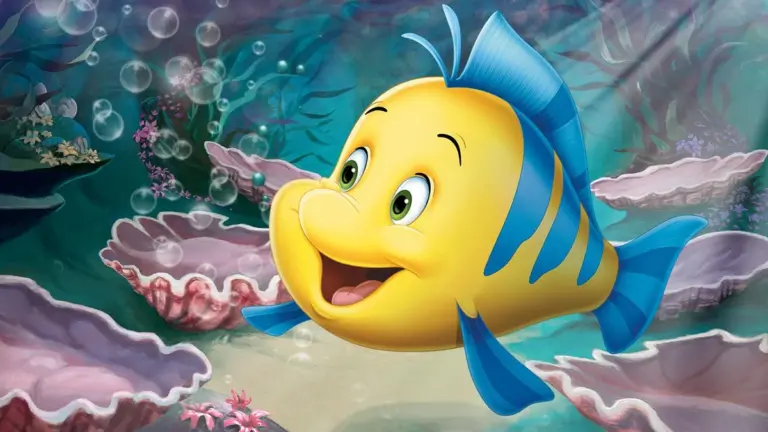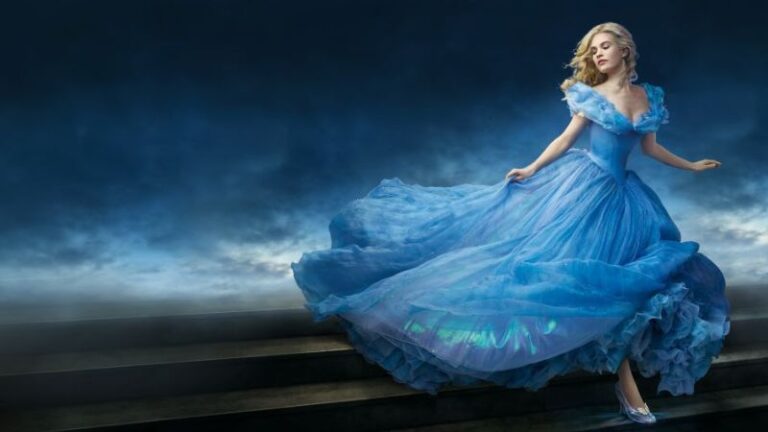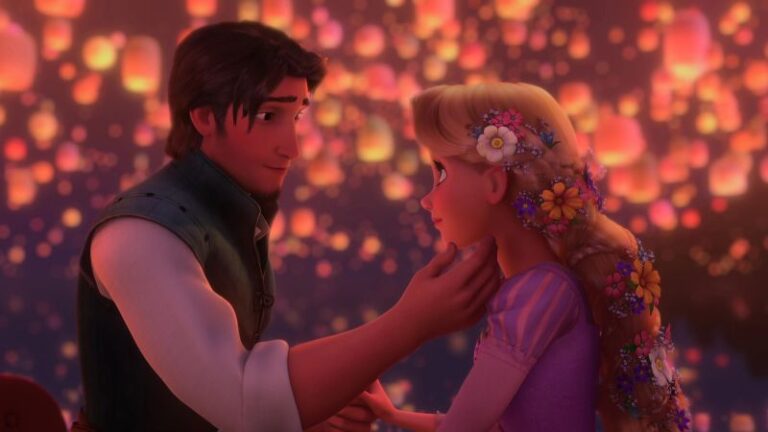20 Disney Characters with Red Hair (with Images)

In the vibrant tapestry of Disney animation, characters of all shapes, sizes, and shades come alive to tell tales that resonate across generations. Among these, a unique group stands out with their fiery manes and bold personalities: the red-haired Disney characters. These crimson-tressed figures, both heroes and villains, have become iconic in their own right, representing a spectrum of traits from passion and courage to mystery and mischief.
Ariel (The Little Mermaid)

Ariel, the titular mermaid of Disney’s 1989 classic “The Little Mermaid,” is a vibrant, curious, and tenacious young princess from the underwater kingdom of Atlantica. With her fiery red hair and emerald green tail, Ariel’s image is iconic, easily distinguishable in the realm of Disney princesses.
Her deep fascination with the human world above, fueled by her collection of dinglehoppers (forks) and snarfblatts (smoking pipes), leads her on an adventure that teaches lessons about love, sacrifice, and self-identity. Ariel’s journey, set against the backdrop of Alan Menken’s memorable melodies, demonstrates the power of perseverance and the pursuit of one’s dreams, no matter the odds.
Her enduring story remains a testament to Disney’s ability to craft tales that resonate deeply with audiences, with themes of courage, curiosity, and the age-old yearning to be where the people are.
Merida (Brave)
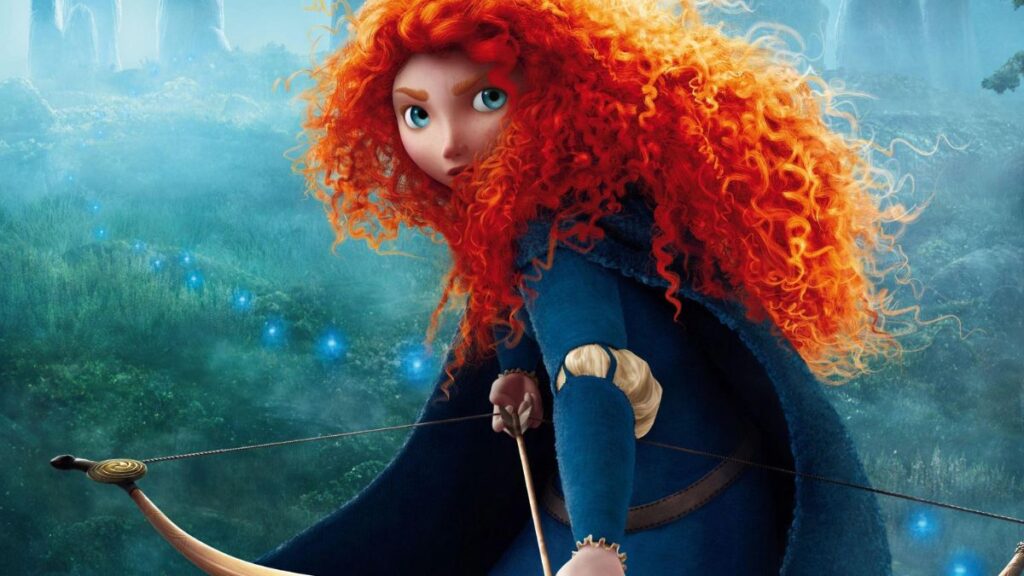
Merida, the headstrong protagonist of Disney-Pixar’s “Brave,” is a symbol of fierce independence and self-reliance. With a mane of wild, curly red hair that mirrors her untamed spirit, Merida challenges traditional norms and expectations set for her as a princess of the Scottish Highlands.
Instead of adhering to customs, she passionately pursues her love for archery and adventure. This bold defiance of tradition leads her and her mother, Queen Elinor, on a transformative journey filled with magic, ancient curses, and revelations. The story of Merida is not just about rebelling against societal norms but emphasizes the importance of understanding, communication, and compromise in mending relationships.
“Brave” showcases Merida’s growth from a rebellious teenager to a wise leader, all the while emphasizing the essence of forging one’s path in the world.
Jessica Rabbit (Who Framed Roger Rabbit)

Jessica Rabbit, the sultry and enigmatic star of “Who Framed Roger Rabbit,” is often remembered by her signature line: “I’m not bad; I’m just drawn that way.” With her cascading red hair, sequined gown, and alluring demeanor, she stands out as a symbol of classic Hollywood glamor in a world bustling with animated characters.
Beneath the surface of her seductive image lies a loyal, loving wife to Roger Rabbit, always ready to stand by him amidst the chaos and crime of Toontown. The film, a groundbreaking mix of live-action and animation, presents Jessica as more than just a pretty face; it unravels the layers of her character, revealing depth, vulnerability, and a steadfast spirit.
In a world where “toons” and humans collide, Jessica Rabbit remains an unforgettable figure, bridging the gap between fantasy and reality with her undeniable charm and complexity.
Anna (Frozen)

Anna of Arendelle, from Disney’s monumental success “Frozen,” is an effervescent and optimistic princess whose love for her estranged sister, Elsa, sets the story’s heartwarming narrative in motion. With her strawberry-red braids and freckled face, Anna embodies hope, tenacity, and an unwavering belief in the power of love.
Her journey from the sheltered walls of her castle to the perilous icy terrains, in search of her sister, showcases her resilience and determination. While Elsa’s icy powers and the song “Let It Go” might steal the limelight, Anna’s character provides the emotional anchor of the story.
Her struggles with loneliness, her spontaneous nature, and her undying love for her family make Anna relatable and endearing to audiences. As half of the dynamic duo in “Frozen,” Anna’s character reminds viewers of the lengths one can go to for family and the transformative power of love and understanding.
Quasimodo (The Hunchback of Notre Dame)
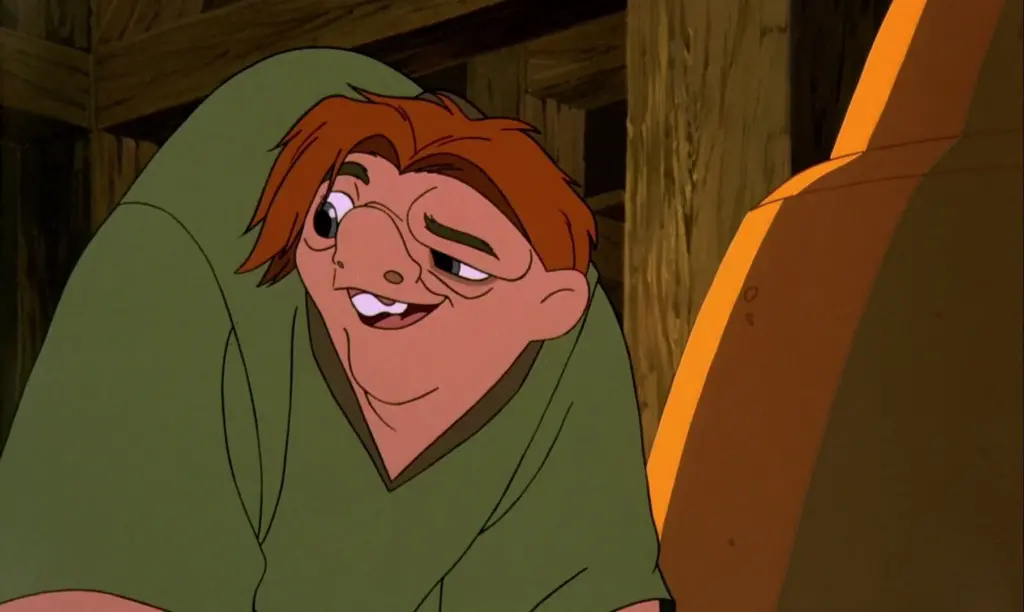
Quasimodo, the gentle and kind-hearted bell-ringer of Notre Dame, is the beating heart of Disney’s adaptation of Victor Hugo’s classic novel. With his distinct red hair and misshapen form, he stands as a poignant representation of the age-old battle between inner beauty and societal prejudice.
Confined to the bell tower by his manipulative guardian, Frollo, Quasimodo’s world is limited to stone walls and gargoyle friends until the spirited gypsy Esmeralda enters his life. Through her, he experiences the world outside, filled with both its cruelties and kindnesses. The story of Quasimodo is one of hope, redemption, and the relentless human desire for acceptance and love.
Disney’s portrayal of this classic character, underscored by powerful songs like “Out There,” emphasizes the idea that real beauty lies within, transcending physical appearances, and that everyone, regardless of their exterior, harbors dreams and desires deserving of respect and compassion.
Peter Pan (Peter Pan)
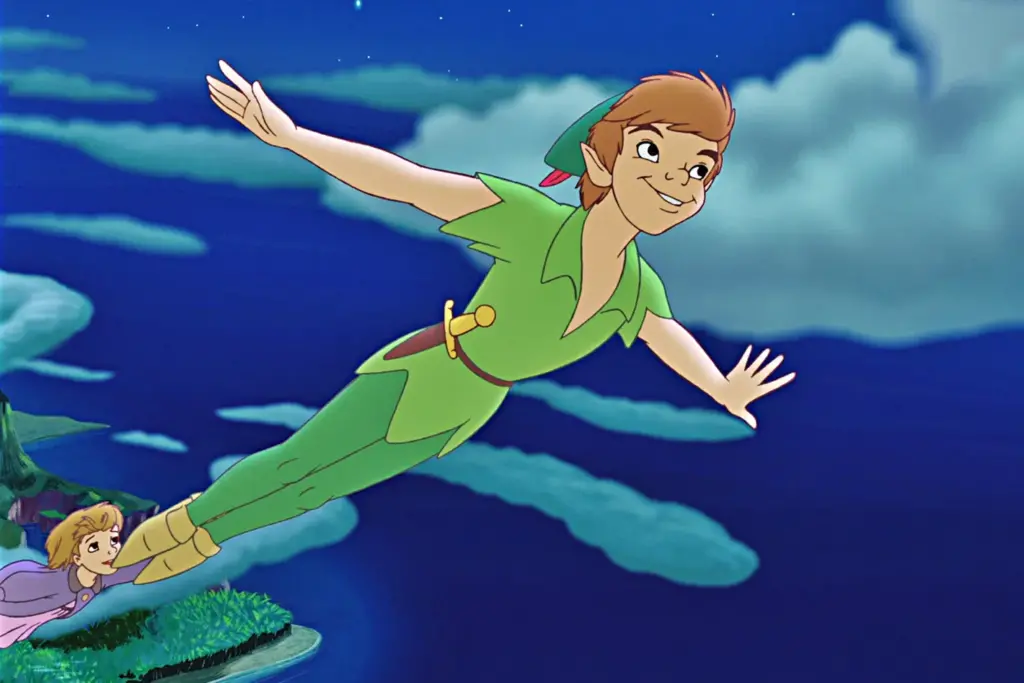
The boy who wouldn’t grow up, Peter Pan, is the emblematic figure of perpetual youth and joyous adventure in J.M. Barrie’s timeless story, splendidly brought to life by Disney in 1953. With his verdant tunic, pointed hat, and mischievous smile, Peter embodies the spirit of childhood wonder, taking children on magical journeys to Neverland, where pirates, mermaids, and Lost Boys abound.
He represents the very essence of freedom, unburdened by the responsibilities of adulthood or the passage of time. His playful escapades with Wendy, John, and Michael Darling, whether they’re soaring above London’s starlit skyline or battling Captain Hook, are imbued with an underlying message: the importance of cherishing innocence and imagination, even as the inexorable march of time continues.
Peter Pan’s story, with its blend of whimsy and melancholy, serves as a reminder of the fleeting nature of childhood and the eternal allure of fantasy and play.
Anastasia Tremaine (Cinderella)

Anastasia Tremaine, one of Cinderella’s stepsisters in Disney’s 1950 classic, is often initially perceived as an antagonist, aligned with her mother’s and sister’s disdainful treatment of the titular character.
With her ruddy hair and a penchant for the color pink, Anastasia, like her sister Drizella, is portrayed as somewhat clumsy, envious, and lacking in the grace and beauty that Cinderella naturally exudes. However, her character undergoes a transformation in subsequent sequels and spin-offs. While she starts as a mere puppet echoing her mother’s malevolent intentions, Anastasia eventually showcases a more tender, vulnerable side.
She yearns for genuine love and, over time, begins to question her family’s cruel behavior. This exploration of her character adds layers to her persona, emphasizing the themes of redemption and the enduring human desire for affection and acceptance.
Taran (The Black Cauldron)

Taran, the young and ambitious protagonist of Disney’s “The Black Cauldron,” embarks on a journey of self-discovery amidst a backdrop of magic, danger, and dark forces. As an assistant pig-keeper dreaming of valor and heroism, Taran’s character is relatable in his quest for significance and identity.
His adventures with the enchanted pig Hen Wen, the brave Princess Eilonwy, and the minstrel Fflewddur Fflam present a tale of courage, friendship, and the age-old battle between good and evil. As Taran confronts the menacing Horned King and the power of the Black Cauldron, he learns vital lessons about sacrifice, humility, and the true essence of heroism.
Taran’s character arc, from a naive boy to a mature and wise young man, mirrors the transformative journeys many undertake in the path to self-realization and growth.
King Fergus (Brave)
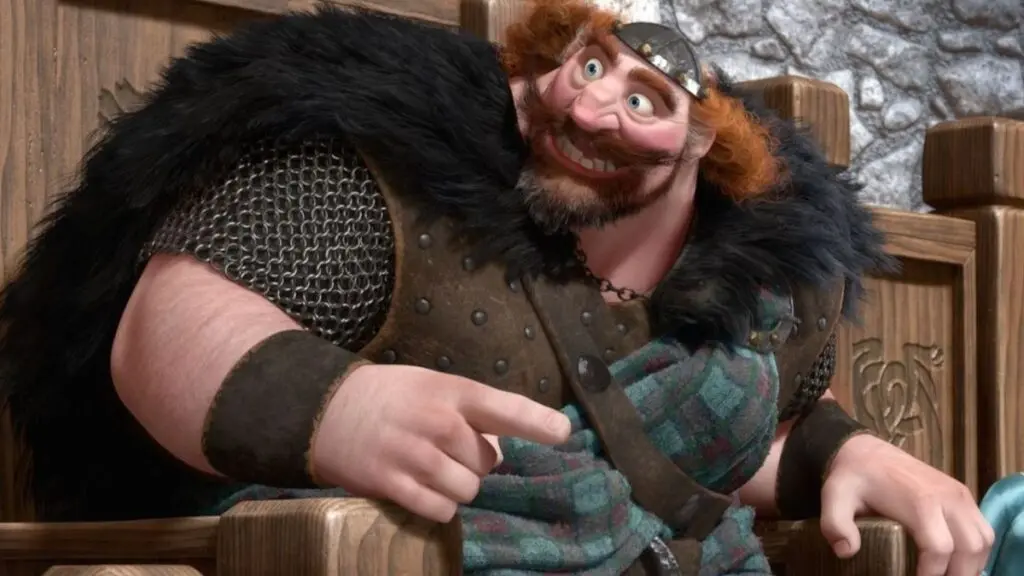
King Fergus of Disney-Pixar’s “Brave” is the boisterous and loving ruler of the Scottish Highlands and the father of Merida. With a hearty laugh, a majestic beard, and a penchant for tales of his battles, especially with the bear Mor’du, Fergus represents traditional masculinity and the pride of a clan leader.
Yet, beneath his robust exterior lies a doting father with an immeasurable love for his family. His interactions with Queen Elinor offer a glimpse into a balanced partnership, where strength and gentleness coexist.
While he might not fully grasp the complexities of his daughter’s desire for independence, his unwavering support for Merida showcases the universal themes of paternal love, protection, and the occasional need to let go.
Hans (Frozen)

Prince Hans of the Southern Isles, introduced as a charming suitor in Disney’s “Frozen,” undergoes one of the most unexpected character twists in modern animation. Initially portrayed as kind, understanding, and a potential love interest for Anna, Hans’s true colors are revealed as the narrative unfolds.
His ambition to ascend to a throne leads him to deceit, manipulation, and betrayal, marking him as the story’s primary antagonist. Hans’s character serves as a cautionary tale about the dangers of blind trust and the masks people wear to hide their true intentions.
His transformation from a seeming ally to a foe emphasizes the story’s themes of self-reliance, the complexities of human nature, and the importance of genuine, tested relationships.
Hercules (when he becomes mortal in Hercules)
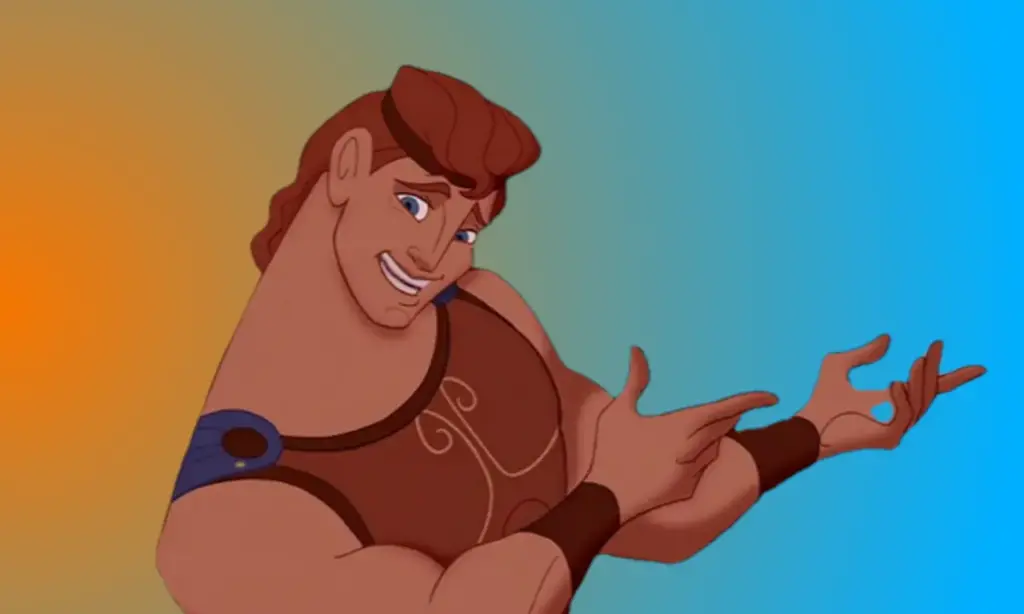
In Disney’s animated classic “Hercules,” the transition of the titular character from god to mortal is a compelling exploration of identity, purpose, and the essence of true heroism. Born to Zeus and Hera, Hercules is transformed into a mortal by the jealous Hades, yet retains his godlike strength.
This unique juxtaposition of mortality and unparalleled power forms the heart of Hercules’ journey. As he grows up feeling out of place in the human world, his struggles are relatable – the quest for belonging, understanding one’s origin, and determining one’s true purpose in life.
Despite his physical prowess, it’s his inner journey and the challenges he faces in understanding love, sacrifice, and the nature of true heroism that truly defines him. In his mortal form, Hercules becomes a beacon of resilience, teaching audiences that true strength lies not just in physical abilities but in the heart and the choices one makes.
Mufasa (as a young lion in The Lion King)

While audiences predominantly witness Mufasa as the wise and regal king of the Pride Lands in “The Lion King,” glimpses into his younger days paint a picture of a lion coming into his own. As a young prince, Mufasa likely grappled with the weight of future kingship and the responsibilities it would entail.
His youthful days would have been marked by a mix of playful exuberance, characteristic of young lions, and a keen sense of learning from his elders. Every interaction, every challenge would shape the lion he was to become — a ruler marked by fairness, wisdom, and a deep love for his family and kingdom.
His early interactions with Scar, his younger brother, would also lay the groundwork for the complexities of their relationship, offering a layered look at sibling dynamics, rivalry, and the paths each chooses.
John Darling (Peter Pan)

In J.M. Barrie’s timeless story brought to life by Disney, “Peter Pan,” John Darling is the middle child of the Darling siblings, standing between the youthful innocence of Michael and the burgeoning maturity of Wendy.
With his top hat, glasses, and umbrella, John often takes on the role of the responsible pseudo-adult, showcasing a blend of childlike enthusiasm and a penchant for leadership. His adventures in Neverland bring forth both facets of his personality — from battling pirates with bravado to looking up to Peter Pan with wide-eyed admiration.
Through John, the narrative subtly touches upon the transitional phase of childhood, where one is caught between the world of make-believe and the impending responsibilities of adulthood. His character serves as a reminder that while growing up is inevitable, the spirit of adventure and imagination can always find a place in one’s heart.
Giselle (in animated form in Enchanted)

The beginning of “Enchanted” introduces audiences to Giselle, an animated princess embodying every fairytale trope — from singing animals to dreams of true love’s kiss. In her animated form, Giselle’s optimism, naivety, and unshakable belief in happily-ever-afters shine brilliantly. She is the archetype of a fairytale princess, with all the dreams and hopes that come with it.
However, her transition to the real world becomes a metaphorical journey of self-discovery. Even in her animated realm, there’s a sparkle in Giselle that promises depth and growth. Her character beautifully explores the notion that while fairytales may seem simple, the emotions, dreams, and aspirations they represent are universal and profound.
Jessie (Toy Story)

Jessie, the spirited cowgirl toy in Pixar’s “Toy Story” series, is a character bursting with energy, vibrancy, and a touch of melancholy. Introduced in “Toy Story 2,” Jessie’s backstory is heart-wrenching; once the beloved toy of a girl named Emily, she faced abandonment as Emily grew up.
This history brings depth to her character and explains her initial fear of being left behind again. But more than her past, it’s Jessie’s resilience and her ability to find love and trust again with Andy’s toys that make her truly endearing. She embodies the struggles many face with change and letting go but also showcases the beauty of new beginnings.
Her loyalty, bravery, and zest for life make her not just a standout toy, but a beacon of hope and joy in the world of “Toy Story.”
Ellie (Up)

Ellie, though present for only a brief segment in Pixar’s “Up,” leaves an indelible mark on the narrative and on audiences worldwide. Through a heartwarming montage, viewers witness the beautiful, simple, and profound love story of Ellie and Carl — from childhood adventures to shared dreams and the pains of life’s unexpected turns.
Ellie is portrayed as a vibrant, adventurous soul with dreams of exploring Paradise Falls. Her spirit and zest for life serve as a driving force for Carl’s journey throughout the movie. Even in her absence, Ellie’s presence is palpable, guiding Carl’s actions and decisions. She embodies the film’s central themes of love, loss, and the enduring power of memories.
Queen Athena (Ariel’s Beginning)

Queen Athena, Ariel’s mother in “The Little Mermaid” prequel, “Ariel’s Beginning,” is depicted as a loving and caring matriarch. Her early scenes with her daughters, especially Ariel, radiate warmth, joy, and a profound sense of familial bond.
Tragically, Athena’s untimely death serves as a pivotal event, shaping King Triton’s strict views about humans and the world above. Despite her limited screen time, Queen Athena’s legacy looms large over the narrative, representing the profound impact of love and loss. Her character reminds viewers of the enduring influence of memories and the ways in which loved ones shape our lives, even long after they’re gone.
Hamish, Harris and Hubert (Brave)

Hamish, one of Merida’s mischievous younger triplet brothers in Pixar’s “Brave,” is an embodiment of youthful exuberance, playfulness, and occasional mischief. Though non-verbal, Hamish, along with his brothers Harris and Hubert, provide much of the film’s comedic relief.
Their antics, whether it’s stealthily stealing pastries or aiding Merida in her quest, showcase the playful and unpredictable nature of childhood. Despite their mischief, the brothers’ loyalty to their sister Merida and their pivotal role in the film’s climax highlight the importance of family bonds and the lengths siblings go for one another.
Thomas (Pocahontas)

Thomas, a young and inexperienced settler in Disney’s “Pocahontas,” represents the uncertainties and moral dilemmas faced by many during the time of exploration and colonization. Under the mentorship of the seasoned John Smith, Thomas grapples with the challenges of a new world and the complexities of interactions with its native inhabitants.
His accidental shooting of Kocoum, mistaking an intimate moment for a threat, sets off a chain of events that brings the tensions between the settlers and the Powhatan tribe to a head. Through Thomas, the narrative delves into the consequences of fear, misunderstanding, and the importance of bridging cultural divides.
Phineas (Phineas and Ferb)

Phineas Flynn, one of the titular characters of the animated series “Phineas and Ferb,” is a beacon of creativity, positivity, and relentless ambition. With his distinct triangular head and ever-present optimism, Phineas, alongside his silent but equally inventive stepbrother Ferb, embarks on daily summer projects that defy the boundaries of imagination.
His ability to dream big and his “can-do” attitude inspire everyone around him, reminding viewers of the limitless potential of creativity and the joy of seizing the day. Whether it’s building a roller coaster in the backyard or circumnavigating the world, Phineas’s adventures, fueled by genuine curiosity and joy, capture the essence of childhood wonder and the belief that anything is possible.



